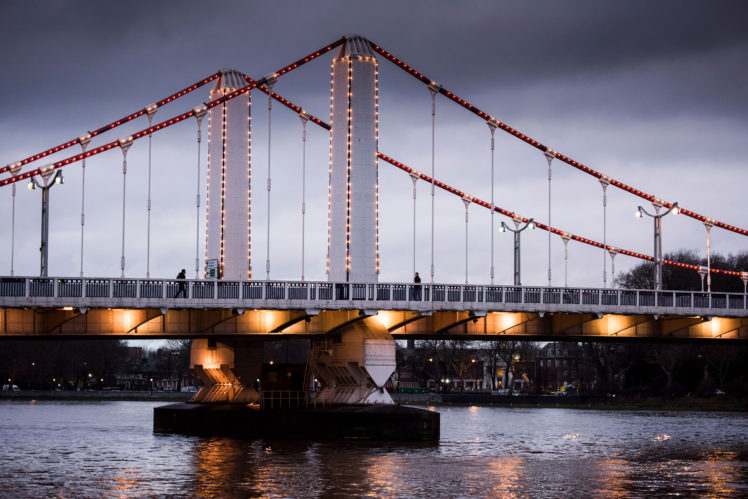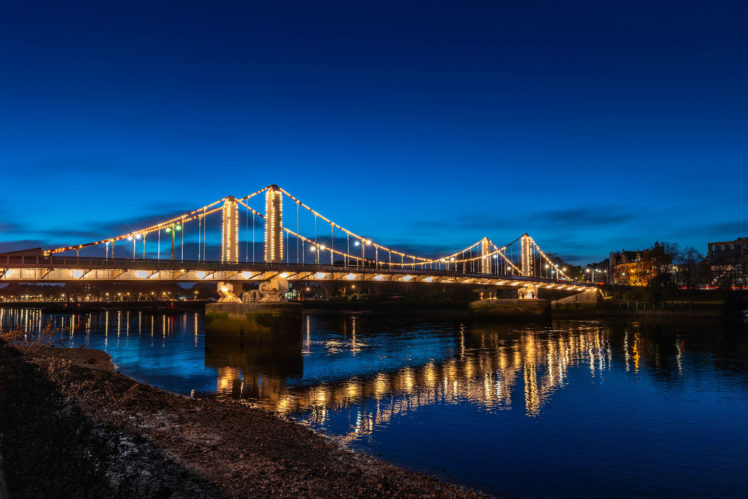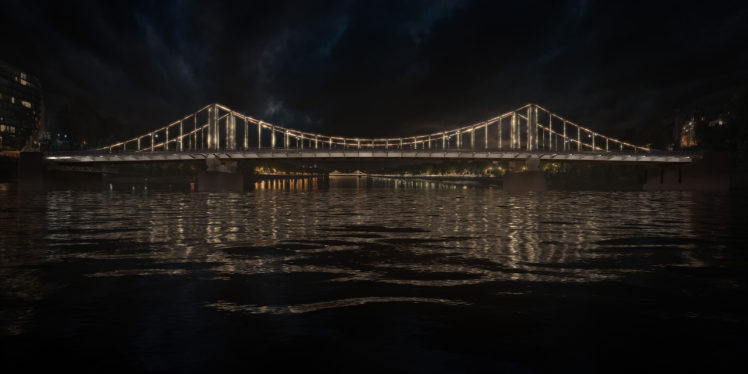Chelsea Bridge
- Modes
- Owner
- Royal Borough of Kensington and Chelsea
- Completed
- 1937
- Designer
- G Topham Forrest and E P Wheeler
- Heritage status
- Grade II
Built during the Great Depression, Chelsea Bridge was part of an initiative supported by the Ministry of Transport to stimulate employment for young men in the Battersea area. The bridge was also an attempt to encourage more international trade, with materials deliberately sourced from around the former Empire, including asphalt from Trinidad and wood from Canada. Chelsea Bridge was opened in 1937 by Canadian Prime Minister Mackenzie King.
The original Chelsea Bridge (built in 1858) was initially called Victoria Bridge. It was renamed Chelsea Bridge as a result of concerns that if the precarious bridge collapsed this would be rather bad PR for Her Royal Highness.
It was also one of only two bridges paid for directly from public funds. However, these funds were not quite sufficient and tolls where introduced on the bridge, making it unpopular with Londoners. Poor visibility, due to the fact that the bridge was only ever lit during nights when Queen Victoria was staying in London, also led to it being underused.
During the construction of the current Chelsea Bridge excavators discovered a remarkable number of Roman and Celtic artefacts and skeletons on the riverbed, leading historians to believe this was the site where Julius Caesar first crossed the Thames during the 54 BC invasion of Britain.

Artist’s Vision
Villareal’s artwork will honour the existing much-loved lighting scheme, colour matching and replicating the visual effect of the incandescent lamps with longer-lasting and more environmentally sustainable LED nodes along the cables and on the suspension bars.

Current lighting on Chelsea Bridge.

Leo Villareal's Illuminated River artwork.
© Illuminated River, Leo Villareal Studio, 2018